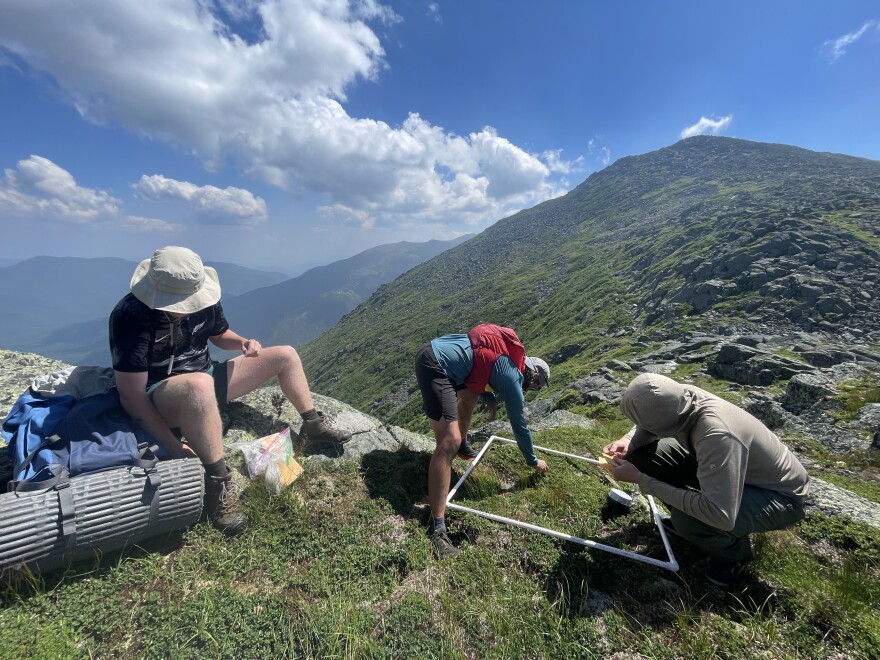The first ever White Mountains Almanac has been published.
A mix of research and illustration, the publication was released by the Mount Washington Observatory, the Appalachian Mountain Club and the Hubbard Brook Ecosystem Study. It’s a month-by-month look at the changes in the region’s climate and ecosystem.
Mike Carmon is the summit weather operations manager for the Observatory and managed the team that developed the almanac. He spoke with NHPR’s All Things Considered host Julia Furukawa about how the almanac came to be and what it tells us about the White Mountains.
Transcript
What inspired this almanac? Why publish one specifically on the White Mountains?
Yeah, I think when it comes to talking about climatology and specifically climate change, we don't necessarily always focus on what changes we can expect or what changes we're observing in our backyard.
This was really an effort to start to answer the question: are we seeing changes in the White Mountains? What changes are we seeing? What impacts may we expect from that locally in the years to come?
I think the observatory and the Appalachian Mountain Club, specifically, with all the data we've been collecting for such a long period of time — these are great, high quality data sets where we can do some analysis and really dig in to see what changes we're experiencing.
Mike, can you give us an example of a story that the almanac really helps to elevate?
Absolutely. Month by month, there's a different theme and a different story we're trying to tell. One of the more interesting ones, maybe, is taking a look specifically at what we call ideal winter recreation days in the outdoors. This is done for the month of March at Pinkham Notch.
In addition to our own sort of internal discussions, we kind of outsourced and engaged with local community members, local professionals, just to get wide input on what makes for a good day in the outdoors. And then we kind of took all that information and came up with this metric that described, is it cold but not too cold? Is the snow powdery but not too powdery or not slushy? And [we] kind of took all those things, put them together and then ranked different days and then kind of tracked it over time just to see, how are conditions changing.
We found that this sort of idealized outdoor recreation day in the wintertime has been decreasing, specifically at Pinkham Notch, in recent decades. There's some subjectivity in there, of course, but this was an example where we really want this to be meaningful to the public.
What was something that you didn't expect or maybe you found interesting along the way when compiling the almanac?
I think a lot of attention is paid to winter time in the White Mountains for obvious reasons. But actually for me, one of the more surprising results, maybe, was looking at some of the summer months and how they may be changing.
We found that the amount of days with thunderstorms on Mount Washington is actually increasing over time in the month of July. I think understanding a little bit better how the behavior of convection and thunderstorms are changing, we thought would be really valuable to the public.

What does all of this information tell us about the state of the White Mountains right now?
I think there's a lot of different lessons we can kind of glean from all this different information. One is we are seeing some changes, specifically our seasonality. And we already sort of knew that with some past work that had been done, but I think this gave us a different level of granularity that we were able to examine what those changes really look like.
I think the other thing that this kind of told us is what down-the-line impacts are we going to see and how is it going to affect things like tourism and the economy and the outdoor industry.
How do you hope people use the almanac?
This almanac is definitely meant to be used by anyone who has an interest in a stake in the White Mountains. So whether you just really enjoy vacationing in the White Mountains, whether it's industry professionals, policy makers, or just are interested in science, we're hopeful, for one, this will just educate folks a little bit more about how science is done, how research is done and where there is an inherent uncertainty, how that sort of meticulous data analysis can really tell us a story, but also tell us where we need to do more.









